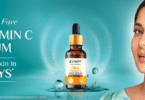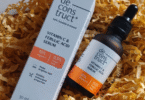The skin, our largest organ, is susceptible to various conditions that can manifest as skin lesions. A skin lesion is any area of your skin that differs abnormally from the surroudingn skin. Skin lesions are common and frequently the result of harm to your skin, but some of them may be cancerous.
Understanding these lesions is crucial for recognizing potential health issues and seeking appropriate medical care. Whether you are experiencing a bothersome rash, an unusual mole, or an unexplained bump on your skin, this guide will shed light on the subject and empower you with knowledge about these conditions. This article will go over the most common skin lesions types, causes and many more.
Remember, while this article aims to provide valuable information, it is not a substitute for professional medical advice. If you have any specific concerns or questions about your skin, always consult a qualified healthcare provider for a proper diagnosis and personalized treatment plan.
What Exactly Are Skin Lesions?
Skin lesions are abnormal changes or abnormalities that occur on the skin’s surface. They can appear in various forms, such as rashes, bumps, sores, discoloration, or growths. They can occur in different shapes, sizes, colors, and textures. Skin lesions can occur due to a wide range of causes, including infections, inflammation, trauma, immune system disorders, genetic factors, environmental factors, and underlying medical conditions.
Causes And Types Of Skin Lesions
There are two types of skin lesions: primary and secondary.
Primary skin lesions are abnormal skin conditions that can develop over a person’s lifetime or be present at birth. Examples of this type of lesion include moles and blisters.
Irritated or manipulated primary skin lesions lead to secondary skin lesions. Examples include scars and crusts.
Skin lesions can have various causes, and the underlying factors depend on the specific type of lesion and the individual’s overall health. Here are some common causes of skin lesions:
Acne
The majority of us will at some point experience acne, often known as pimples, particularly throughout our teenage years. The face, neck, shoulders, chest, and upper back are common areas where acne occurs. If untreated, acne can leave scars.
Acne develops when your pores are clogged with dead skin cells or sebum, an oily secretion. A certain type of bacteria that is very abundant on the skin may also contribute to it.
Acne of mild to moderate severity is typically treatable at home. Acne can be treated using over-the-counter treatments and medicines. It is advisable to visit a doctor if acne persists or becomes really severe.
Cold Sores
A red, painful, fluid-filled blister known as a cold sore develops close to the mouth and lips. Herpes simplex virus (HSV) is the reason for their occurrence. Cold sores might appear along with a low fever and body pain. Prior to the appearance of the cold sore, the affected area will frequently tingle or burn. Stress, menstruation, illness, or exposure to the sun can cause blisters to recur.
Cold sores typically heal on their own without any medical intervention. The healing process can be quickened up by over-the-counter topical medications. It may be necessary to seek medical attention for really serious cold sores or sores that don’t appear to be healing on their own.
Actinic Keratosis
Skin that has been damaged by the sun might develop actinic keratosis. Although the color is typically pink, the base may be brown, tan, or gray. Skin cancer is most likely to develop in those with actinic keratosis. As a course of treatment, doctors could advise surgery, creams, or light therapy.
Allergic Eczema
A common skin condition, allergic eczema causes your skin to become itchy, red, scaly, or raw. It appears when an allergen directly contacts your skin. Hands and forearms are the most common areas for allergic eczema to occur. Blisters and scaly patches of skin on your body may also be visible.
Impetigo
The bacteria Staphylococcus or Streptococcus are the cause behind impetigo. Usually around the mouth, forearms, and hands, it causes sores on the skin that is affected. These particular skin lesions are pus-filled and develop into pimples later. In babies and young children, it is a contagious skin condition. Depending on your healthcare provider’s recommendation, impetigo can be treated with either topical or oral antibiotics.
Contact dermatitis
An allergic reaction to an irritant or allergen causes contact dermatitis. Skin that is itchy, red, scaly, or raw results from contact dermatitis. Additionally, it leads to blisters that weep, ooze, or develop a crust. Your healthcare practitioner may recommend an oral medication or a prescription cream for the allergic response if it is severe or covers a significant amount of the body.
Psoriasis
A common chronic inflammatory skin condition known as psoriasis is typified by raised, itchy skin plaques. In psoriasis, your skin cells’ life cycle quickens. As a result, your epidermis’ surface accumulates dead cells, resulting in red, inflamed, and flaky patches of skin. It frequently appears on the scalp, elbows, knees, and lower back. A steroid cream may be useful, and if the condition is severe, a dermatologist or primary healthcare provider may suggest prescription medications.
Chickenpox
Small red, itchy fluid-filled blisters characterize chickenpox. It causes bodily aches, fever, and sore throat. Up to the time when all of your blisters have healed, it is contagious.
Cellulitis
When bacteria or fungus penetrate your skin through a cut or wound, cellulitis develops. It results in swelling and redness. Your skin gets warm and tender. In the case of a severe infection, symptoms include fever and chills.
What Are The Symptoms Of Skin Lesions?
Depending on the type of lesion you have, your skin lesion’s symptoms may vary. The general symptoms are:
- Swelling
- Itchiness
- Redness
- Bleeding
- Sores containing discharge
- Flaking
- Infection
- Dryness
- Irritation
- Pain
- Inflammation
- Fever
- Headache
- Peeling
- Sweating
How Are Lesions On The Skin Treated?
The type of skin lesion, its underlying cause, and the patient’s general condition all affect how it is treated. Here are some typical methods for treating skin lesions:
Medications
Topical medications, like ointments and creams that reduce inflammation and calm the affected area, are one of the most popular treatments for skin lesions. Itchy, burning, red, and painful symptoms can be effectively treated with topical creams or gels. Oral medications may be prescribed by doctors if you have a systemic infection like chickenpox.
Surgeries
Common skin lesions typically disappear on their own or with medication. However, some changing skin growths, like moles, may need surgery. These skin lesions can be permanently removed with surgery. Sometimes, doctors will advise laser birthmark removal.
Home Remedies
Most skin lesions require medical attention, but others don’t. To relieve the symptoms, consider some straightforward home remedies. If certain skin lesions are making you itchy or swollen, you can try taking an oatmeal bath to relieve those symptoms. To stop your skin from being harmed by rubbing against clothing, apply absorbent powder.
Conclusion
Skin lesions encompass a wide range of abnormal changes or abnormalities that occur on the skin’s surface. Understanding the different types of skin lesions is essential for accurate diagnosis and appropriate treatment. Diagnosis of skin lesions involves a thorough examination, medical history review, and sometimes additional diagnostic tests such as biopsies or medical laboratory tests. It is crucial to consult a healthcare professional for proper evaluation and management of skin lesions, especially if they are new, changing, or causing concern.




